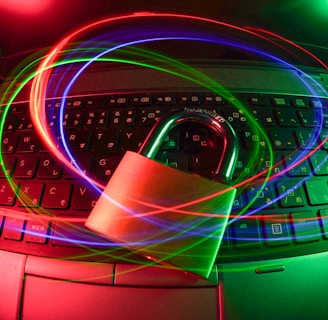Account Security Made Simple: How to Stay Safe Online (Even If You’re Not Tech-Savvy)
If someone had the keys to your home, would you leave the door wide open? Every time you log into email, shop online, check your bank account, or scroll social media, you're walking through a digital door—and leaving it unprotected could cost you far more than you think. In today’s connected world, account security isn’t just for IT professionals—it’s essential for everyone. Fortunately, protecting your online accounts doesn’t require technical knowledge. Just a few smart habits can shield you from digital intruders. This article explains the essentials of account security in simple words.
CYBERSECURITY


What Is Account Security and Why Is It Important?
Account security refers to the combination of tools and behaviors that protect your online accounts—such as email, banking, social media, and cloud services—from unauthorized access.
When someone gains access to one of your accounts, the consequences can be serious:
Theft of personal or financial information
Unauthorized use of your identity
Fraudulent messages sent to your contacts
Loss of access to important services
Most online fraud starts with compromised login credentials, making account protection a top priority.
Common Online Security Risks
Understanding the most frequent threats can help you prevent them:
Weak or Reused Passwords: Using simple or repeated passwords across multiple accounts makes it easier for attackers to break in.
Phishing Scams: Cybercriminals often send fake emails or messages to trick users into revealing login details.
Ignoring Extra Security Features: Many users skip enabling additional protective tools like two-factor authentication, leaving their accounts vulnerable.
How to Protect Your Accounts: A Simple Guide
You don't need to be a cybersecurity expert to protect your accounts. These steps are effective and easy to follow:
Use Strong, Unique Passwords: Create long, complex passwords and avoid using the same one for different sites. Consider using a trusted password manager to keep track of them.
Enable Two-Factor Authentication (2FA): 2FA adds an extra layer of protection by requiring a second verification step—such as a code sent to your phone—alongside your password.
Stay Alert for Suspicious Messages: If you receive an unexpected email or message asking for your login details or inviting you to click a suspicious link, do not respond. Visit the official website directly to verify.
Monitor Your Accounts Regularly: Check for unfamiliar logins or other unusual activity. Most platforms provide a history of access sessions.
Keep Your Devices and Software Updated: Regular updates fix known security vulnerabilities. Keeping your operating system and applications up to date helps prevent exploits.
Conclusion: Take Control of Your Online Security
Account security is not just a technical concern—it’s essential to your digital well-being. By adopting a few practical habits, you can significantly reduce the risk of unauthorized access.
Each of your online accounts is a door to your personal information. It’s your responsibility to ensure those doors are properly locked.
If you’re unsure where to begin, start with two simple steps today: review your current passwords and enable two-factor authentication. A few small actions now can save you from much larger problems later.
Cybersecurity is not a destination—it’s a journey we walk together. Let’s make the digital world safer, one conscious click at a time.
#Cybersecurity #DataProtection #PrivacyMatters #StrongPasswords #PhishingAwareness #TwoFactorAuthentication #OnlineSecurity #DigitalSafety #InternetSecurity #CyberAwareness #SecurityForAll #ProtectYourData #NoHacker #TechSecurity #CybersecurityTips #LearnCybersecurity #StaySafeOnline #SecureYourData #SafeInternet
